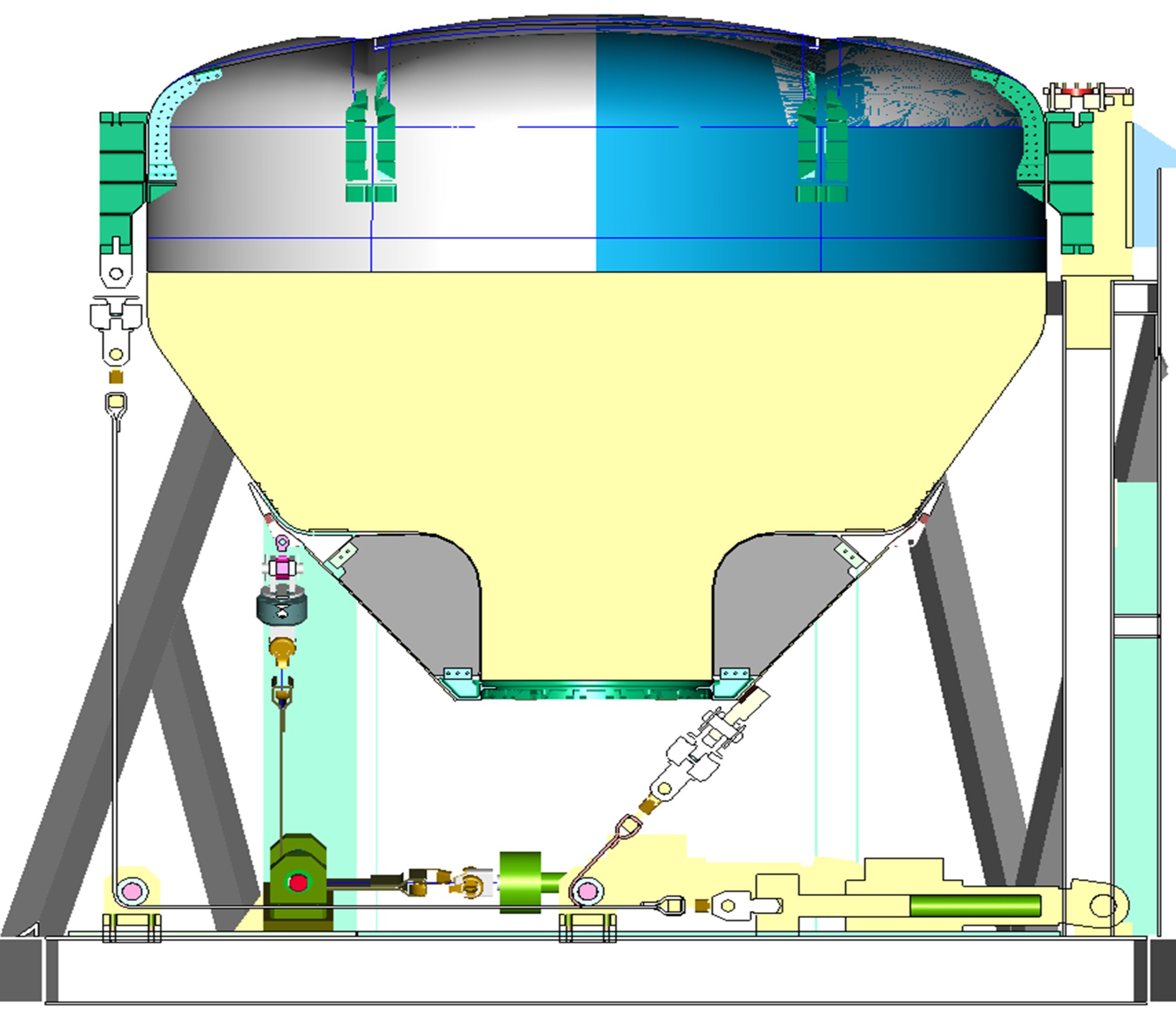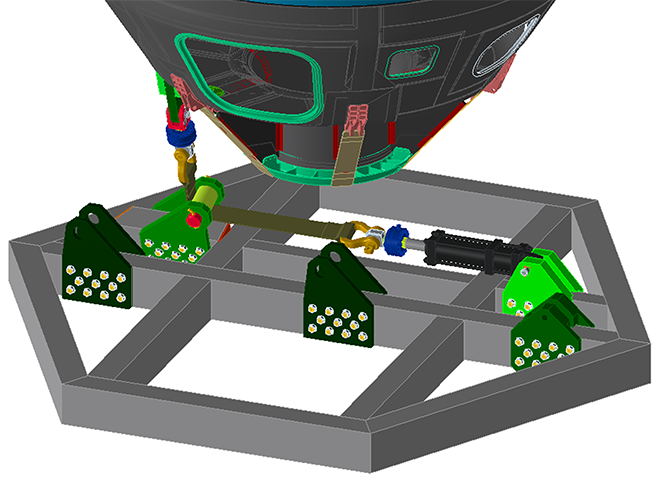The NESC investigated the construction and testing techniques of a composite pressure vessel for the Orion crew module. The full-scale Composite Crew Module was built by Alliant Techsystems (ATK), at Iuka, Mississippi, and delivered to LaRC for testing in September 2009. The main test matrix included 11 load cases consisting mostly of combined point loads and internal pressure. Point loads were applied to the crew module’s fittings such as the parachute attachment points. To facilitate testing, a selfreacting loading frame was designed and built (also in Iuka), which additionally served as the skeleton for the shipping container.
Because the majority of the fittings were located on the upper half of the module, the test article was mounted in the test frame upside down. This allowed for all heavy hardware (actuators, brackets, etc.) to be mounted securely to the base of the frame. Another advantage afforded by the upside configuration was easy access to the tunnel hatch where all cable harnesses feed-throughs and air inlet port were located.
Point loads to fittings were applied using an innovative technique to route load from the hydraulic actuators to the fittings through a low-stretch strap (less than 1% extension). Mounting the heavy actuators horizontally on the base of the test frame and routing the straps through heavy duty rollers to achieve the desired load vector proved to be very effective. Since none of the heavy actuators had to be repositioned, this method allowed for quick test reconfiguration. To account for possible friction, two load cells were used to monitor the load at each end of the strap.
For more information, contact Dr. Sotiris Kellas, LaRC, sotiris.kellas@nasa.gov





























